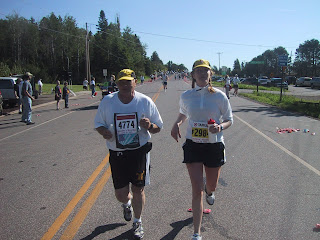Gearing Up for the Triathlon Season:
A Primer for the Novice Triathlete
www.Team-Magic.comSet a Challenging and Appropriate Schedule
There is definitely a trend in this day and age to move up to the 70.3 and iron distances as fast as possible. Before you make this your focus, consider honing your speed at shorter distance races first. You will get invaluable experience and conditioning that will make your subsequent long course races much more successful. Realize that long course racing not only puts a tremendous stress on your body, but it is also much more time intensive. It is almost guaranteed to detract from other responsibilities such as work and family. On the other hand short course racing is much more realistic to balance with a busy, full life.
Plan Your Training Accordingly
Pre Season:
Before your first race of the year you will want to have several months of training under your belt. The most widely accepted approach to training early season training is referred to as “base training.” The focus in base training is to build up your total weekly training time, but keep the majority of your training in the easy-medium intensity level. This is the strategy of the pros and is especially important for beginners. Your fitness and even your speed will improve by doing more minutes of training each week.
You can still do 1-3 intensity workouts during this period, but remember intensity workouts can detract from your base training. Don’t run the risk of getting burned out early in the year by doing too much speed. Many athletes do a VO2 test so they have accurate HR information to discipline their pacing. If you are new to endurance training, you will be surprised that base training is much easier than you expected.
Final 6-8 Weeks Before Your First Race:
This is the period that traditionally known as the “build period,” which basically means to scale back some of your volume (overall training minutes) and start to include more intensity. This kind of training gets you ready for the mental and physical challenges of race day. It is simple reality that the average recreational athlete has only limited time to train. By doing more intensity training—ranging from a little below to even faster than race pace—you can get great results from your workouts. Spin class, intervals and fartleks, time trial sets, masters swims, shorter races, and hammerfests with friends all push your intensity up. Try to structure your intensity so it closely fits with your race goals.
It is somewhat of a fad right now to say that age group athletes simply don’t have time for base training, so they should skip directly to more intensity. This is a short-sighted view. The best predictor of sports performance is total lifetime hours of training in that activity. If you want to reach your potential, then commit to getting enough hours of training in. Be patient and build your base up first. Don’t fall victim to the “expert of the moment” and skip base training.
Racing Season:
Now is when the fun begins! Once you have entered the racing season, your main goal is to RACE RACE RACE! But seriously, try to put together a schedule that averages about once per month. This will give you time to race your hardest at each race, and still get enough rest and hard training between each race. Here are some tips on how to do this:
If you are going to do a race, then you need to go into that race with the best chances for success. Before each race take a mini-taper recovery consisting of 1-3 easy days before. Don’t take these days off, just do 20-45 minutes of light training on those days. After you race your hardest, take another 1-3 days similarly easy after the race. You will notice quite a bit of rest is required if you are going to give your max effort for a race. Race too often, and you can actually “race your way out of shape.”
Now you have a few weeks until your next race. Once you are recovered get back into serious training mode because this is what will make you faster. Your training should be a mix of long slow base training and also plenty of intensity. Your specific plan should address whatever are your specific limiters. If you have more than 3 weeks, include a “recovery week” consisting of 3-5 days into the training block. Leading into the next race, get your taper in and you will be ready to drop the hammer….even faster than before.
Self-Care and Recovery
If you are going to live the triathlon lifestyle and race frequently, you need to take good care of yourself. This involves dealing with normal sore spots and soft tissue inflammation. A large part of become great involves keeping injuries at bay, so you can train and race. Frequent stretching, strength training, adequate sleep, good nutrition….every single choice you make can help or hurt your training.
If you follow this system you ought to have an awesome season of triathlon. You may even find yourself addicted, wanting to train for a marathon, half ironman, or ironman. The end of one season means you can start training for the next goal, right? Wrong. You cannot train all year round, indefinitely. Your fitness will eventually peak and you will start to experience burnout. The way to avoid this frustration is to take an “off season.” This is not to say don’t exercise at all, but the good athletes take 1-2 months a year of drastically reduced training. This is also the perfect time to emphasize rebuilding your muscular strength and flexibility by hitting the gym in the fall/winter.
























